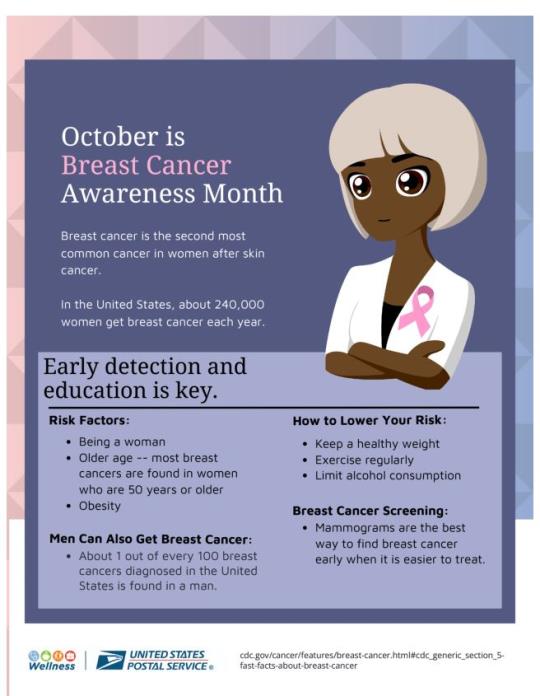Breast cancer occurs when cells in the breast change and grow out of control. There are different types based on which cells turn into cancer.
Breast cancer can affect people of all ages, races, and ethnicities. Men can also get breast cancer. Differences in genetics, hormones, environmental exposures, and other factors can lead to risks among different groups of people. Increasing age is the most important risk factor.
The signs and symptoms of breast cancer include:
n A new lump or thickening in or near the breast or in the armpit.
n A change in the size or shape of the breast.
n Dimpling or puckering in the skin of the breast. It may look like the skin of an orange.
n A nipple turned inward.
n Discharge other than breast milk, such as blood. The discharge might happen suddenly and occur in only one breast.
n Scaly, red, or swollen skin in the nipple area or on the breast.
n Pain in any area of the breast.
You may be able to help prevent breast cancer by:
n Making healthy lifestyle changes, like maintaining a healthy weight.
n Limiting alcohol use.
n Getting enough exercise.
n Limiting exposure to estrogen by breastfeeding.
n Limiting hormone therapy.
Ask your doctor about the risks of hormone therapy and find out if it is right for you.
Get regular mammograms to identify breast cancer in the early stages, when it is easier to treat. For more information, go to medlineplus.gov/breastcancer.html.
— Benefits and Wellness,
Human Resources, 10-3-24
